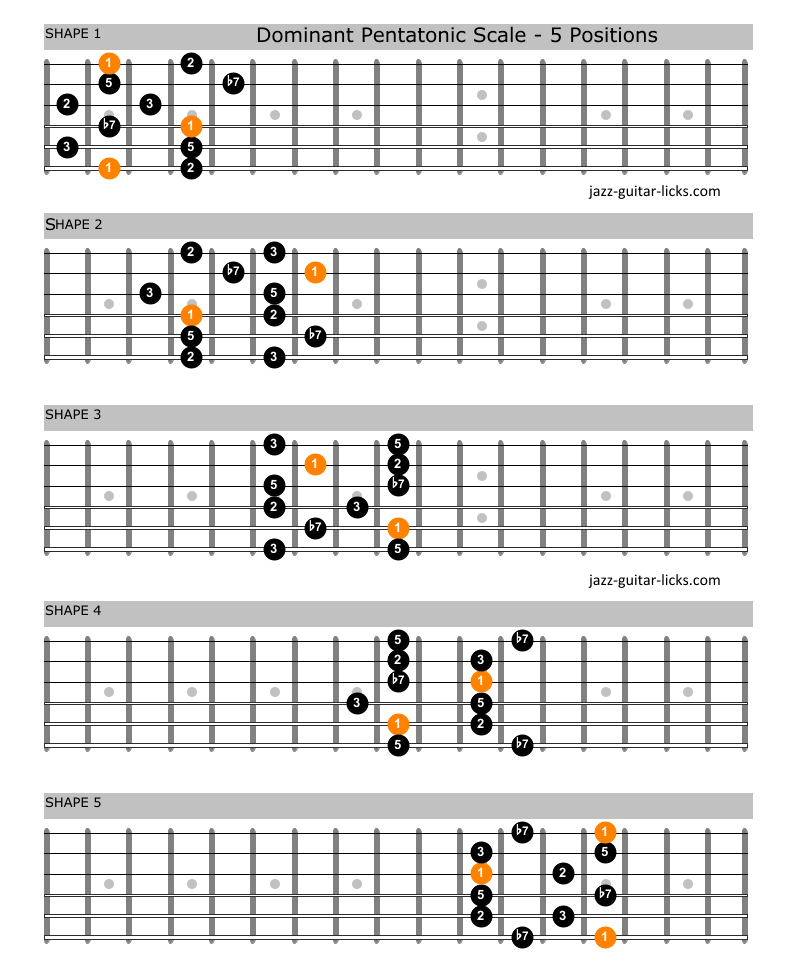I remember seeing PG using a pentatonic phrygian scale and reading on the Syn´s tips that we should apply the modes to the pentatonic patterns(I don't remeber in which lessons I saw that exactly).
In order to make a pentatonic scale we need to take off the fourth and seventh degrees of the major scale, so does it means that lydian and locrian pentatonic scales does not exist??
For example, if we use a C maj scale we would need to take off F and B notes to make it pentatonic and if we wanted to use F lydian pentatonic or B locrian pentatonic we could use a pentatonic pattern that fits on that scales but we would need to go out of that pentatonic pattern in order to play the tonal centre and to land in a "safe place" so it wouldn't be a pentatonic scale anymore, right? That's why I thought that any lydian or locrian scales may not exist when we apply them to a pentatonic pattern.
However, thinking about this I saw a diference between locrian and lydian scales when we apply a pentatonic pattern to them: If we keep using the C major scale and it's modes as an example we would get F lydian and B locrian that corresponds to the fourth and seventh degree that we have taken out to play a pentatonic scale. If we try to use a pentatonic pattern applying it to B locrian we wouldn't have F and B but we still have C,D,G and A, which are all flatted notes from the B maj scale so if at a certain moment we want to apply a pentatonic pattern to the B locrian scale it will have a locrian sound(I guess), we just would need to go out of that pentatonic scale to land on a "safe place". However, if we do the same thing over F lydian we wouldn't have F,the tonal centre,and B neither, which is the only note that we have sharpened to turn F maj in to F lydian so it's pointless to use a pentatonic pattern over a lydian scale because we wouldn't get any lydian sound out of it,unless we just want to get a pentatonic scale sound at a certain moment.
Does anything of what I have said make sense??
And if what I have said about the lydian scale make sense, How can be the third,fourtheenth and fifteenth pentatonic etudes be on lydian?? I gess that they are on lydian because it is written on the description that the etude uses the fourth mode, but the third and fourteenth etudes doesn't sound lydian and in the fifteenth etude there should be 5 sharps instead of four on the staff becauste it is also writen on the descripcion that the etude is on E major so I gess that it means that the stude is on E lydian
In order to make a pentatonic scale we need to take off the fourth and seventh degrees of the major scale, so does it means that lydian and locrian pentatonic scales does not exist??
For example, if we use a C maj scale we would need to take off F and B notes to make it pentatonic and if we wanted to use F lydian pentatonic or B locrian pentatonic we could use a pentatonic pattern that fits on that scales but we would need to go out of that pentatonic pattern in order to play the tonal centre and to land in a "safe place" so it wouldn't be a pentatonic scale anymore, right? That's why I thought that any lydian or locrian scales may not exist when we apply them to a pentatonic pattern.
However, thinking about this I saw a diference between locrian and lydian scales when we apply a pentatonic pattern to them: If we keep using the C major scale and it's modes as an example we would get F lydian and B locrian that corresponds to the fourth and seventh degree that we have taken out to play a pentatonic scale. If we try to use a pentatonic pattern applying it to B locrian we wouldn't have F and B but we still have C,D,G and A, which are all flatted notes from the B maj scale so if at a certain moment we want to apply a pentatonic pattern to the B locrian scale it will have a locrian sound(I guess), we just would need to go out of that pentatonic scale to land on a "safe place". However, if we do the same thing over F lydian we wouldn't have F,the tonal centre,and B neither, which is the only note that we have sharpened to turn F maj in to F lydian so it's pointless to use a pentatonic pattern over a lydian scale because we wouldn't get any lydian sound out of it,unless we just want to get a pentatonic scale sound at a certain moment.
Does anything of what I have said make sense??
And if what I have said about the lydian scale make sense, How can be the third,fourtheenth and fifteenth pentatonic etudes be on lydian?? I gess that they are on lydian because it is written on the description that the etude uses the fourth mode, but the third and fourteenth etudes doesn't sound lydian and in the fifteenth etude there should be 5 sharps instead of four on the staff becauste it is also writen on the descripcion that the etude is on E major so I gess that it means that the stude is on E lydian


